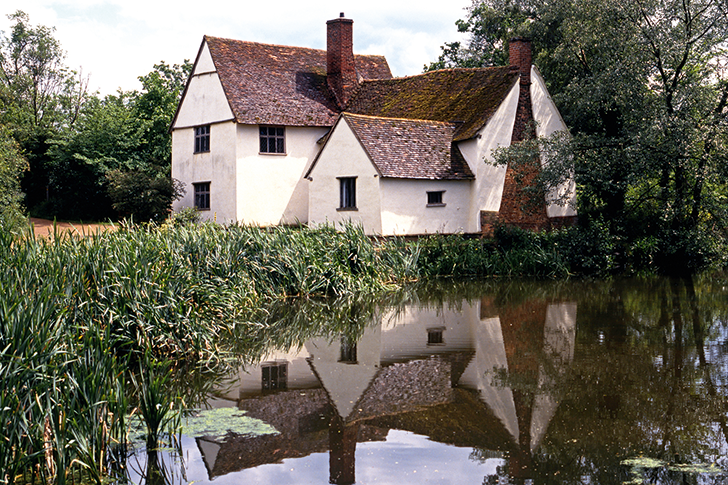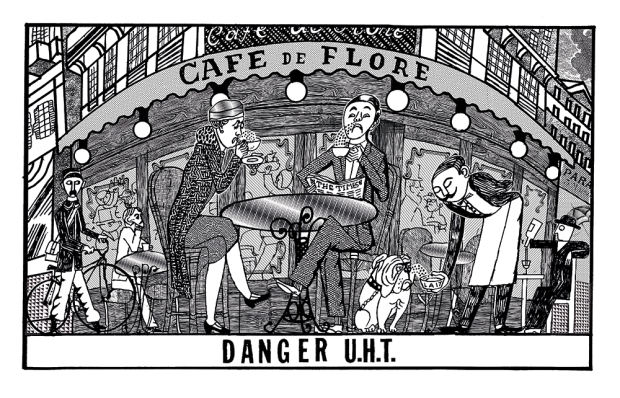You’ve already seen a picture of the Essex-Suffolk border. Assuming you’ve seen Constable’s ‘The Haywain’, that is: the Stour (the river into which the farmer has cleverly driven his cart) forms the county boundary, meaning the land on the left is Suffolk, that on the right, Essex. Years of David Beckham and jokes about girls in white stilettos had rather inclined me against Essex, so when I moved to Suffolk it was galling to discover I had a Colchester postcode. Only gradually did I realise how well the two counties work together.
This part of the world is beautifully untrendy — it’s on the way to nowhere other than the North Sea, so, unlike the Cotswolds, we are spared invasion by tourist coaches. Flatford Mill (home of ‘The Haywain’) is at the eastern end of the boundary. Further inland are the villages of Nayland and Polstead, both of which feature in Ruth Rendell stories. The author was born in Essex — an early job on the Chigwell Times ended when she filed a story about an event she hadn’t attended, failing to mention that the after-dinner speaker had died in the middle of the speech. But she finished up as Baroness Rendell of Babergh, a Suffolk area whose name goes back to the Domesday Book. Her grave is there, admirably modest (just her name and dates).
The town of Sudbury is where the dogs in 101 Dalmatians pause during their journey from London, on a mission to rescue the kidnapped colleagues who have been brought to Suffolk for skinning. Dodie Smith owned several dogs of that breed herself, and got the idea for the story when a friend said they ‘would make a lovely fur coat’. Sudbury also does a good job of keeping up the area’s artistic credentials — it was Gainsborough’s home town. His house survives as a museum, which runs excellent workshops for children. Meanwhile, St Gregory’s church contains the skull of Simon of Sudbury, separated from his body in 1381 during the Peasants’ Revolt; the peasants objected to his role (as Archbishop of Canterbury) in the introduction of the poll tax. The church’s website advises those wishing to view the skull to contact Barbara, Margaret or Colin.
Many of the houses in the area are painted the traditional Suffolk pink, originally made by mixing whitewash with berries and/or pig’s blood. In 2013 the Angel Hotel in Lavenham, then owned by Marco Pierre White, was daubed a shade that the local council likened to the colour of blancmange. Mr White had to find a darker pink.
The area’s most poignant square yard is to be found in Gestingthorpe, just over the boundary from Sudbury in Essex. Specifically the village’s church, and even more specifically its plaque to local boy Captain Lawrence Oates. ‘When all were beset by hardship,’ reads the message from his army colleagues, ‘he being gravely injured went out into the blizzard to die.’ What it doesn’t record is that he did so in his socks, realising as he left the tent that there was no point putting his boots on. Oates’s mother still lived in Over Hall across the road, and every week for the rest of her life (25 years) she came to the church and polished the plaque.
Got something to add? Join the discussion and comment below.
You might disagree with half of it, but you’ll enjoy reading all of it. Try your first month for free, then just $2 a week for the remainder of your first year.














Comments
Don't miss out
Join the conversation with other Spectator Australia readers. Subscribe to leave a comment.
SUBSCRIBEAlready a subscriber? Log in